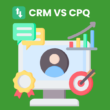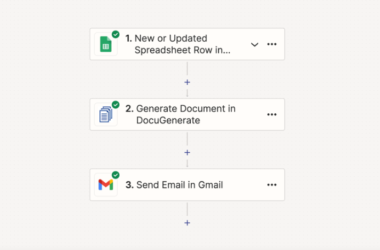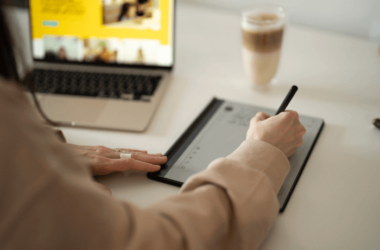Table of Contents Show
Are you struggling to stay productive and efficient throughout your workday? Don’t worry, we’ve got you covered!
In this blog post, we will share 10 powerful habits that can help boost your productivity and make the most out of your time. From prioritizing tasks to maintaining a healthy work-life balance, these strategies enhance efficiency and effectiveness. Let’s dive in!
1. Prioritize Your Tasks
By organizing your tasks into a clear and manageable list, you can focus on completing the most important ones first. This ensures that you make efficient use of your time and avoid feeling overwhelmed.
By setting deadlines, you create a sense of urgency that can motivate you to stay focused and accomplish your goals.
a. Create a to-do list
In order to prioritize your tasks you should create a to-do list that can help you streamline your stuff in an organized manner. You can create your to-do list by creating an outline for your tasks for the day. It is a good practice to include both personal and work-related work in your list for better productivity.
b. Rank tasks based on importance
When it comes to being productive, it’s important to rank tasks based on their importance. Prioritizing your tasks allows you to focus on the most crucial ones first and ensures that they are completed promptly. This not only helps you stay organized but also increases your overall efficiency.
Prioritizing tasks based on their importance increases productivity and efficiency, ensuring that crucial tasks are completed on time.
To achieve this, start by creating a list of all the tasks you need to accomplish. Then, evaluate each task and determine its level of importance or urgency. By assigning priority levels to your tasks, you can ensure that you tackle the most critical ones first and avoid wasting time on less significant activities. This approach will help maximize your productivity and make sure that nothing important slips through the cracks while ensuring optimal use of your time.
c. Set deadlines for each task
Setting deadlines for each task is crucial for boosting productivity and ensuring efficient completion. By assigning specific time frames, you create a sense of urgency and accountability, pushing yourself to stay on track and meet your goals. Incorporating this habit into your daily routine allows for better time management, and increased focus, and ultimately helps you accomplish more tasks promptly.
2. Break Tasks into Smaller Steps
Dividing big tasks into smaller subtasks is a proven method to increase efficiency and productivity. By breaking down complex projects into manageable steps, you can tackle them more effectively and avoid feeling overwhelmed. This approach allows for better focus, organization, and progress tracking.
Additionally, it is crucial to set milestones that act as checkpoints along the way. These milestones serve as mini-goals that help measure your progress and keep you motivated. When you have clear markers of achievement, it becomes easier to stay on track and maintain momentum.
Remember to prioritize completing one step at a time rather than jumping between multiple tasks simultaneously. This focused approach ensures that each task receives the necessary attention and reduces the risk of errors or oversights.
By implementing these habits of dividing tasks into smaller steps, setting milestones, and focusing on one step at a time, you will enhance your productivity while maintaining an organized workflow toward achieving your goals.
a. Divide big tasks into smaller subtasks
Dividing big tasks into smaller subtasks can help increase productivity and make daunting projects more manageable. Break down the task into smaller, actionable steps that you can tackle one at a time. This approach allows you to focus on completing each subtask, which gives a sense of progress and helps maintain momentum toward your overall goal.
By setting milestones to track your progress, you create checkpoints along the way that keep you motivated and accountable. These milestones act as mini-goals within the larger task, giving you a clear sense of direction and accomplishment as you move closer to completion. Celebrate each milestone achieved, as it reinforces your productivity habits and keeps you motivated for further success.
Stay focused by completing one step at a time rather than getting overwhelmed by the entire project. Concentrate on finishing each subtask before moving on to the next one. This method prevents distractions from derailing your progress while ensuring that all aspects of the task are given equal attention.
b. Set milestones to track progress
Setting milestones is essential for tracking progress and staying motivated. Break down your larger tasks into smaller, more manageable steps, and assign specific deadlines or targets for each milestone. This will help you measure your progress along the way and provide a sense of accomplishment as you complete each milestone. Remember to celebrate these achievements to maintain motivation and momentum towards your overall goal.
Stay on track by regularly reviewing and adjusting your milestones based on your progress. Use a visual representation, such as a checklist or timeline, to visually see how far you’ve come and what lies ahead. Setting clear milestones not only allows you to monitor your progress but also helps in prioritizing tasks effectively, making it easier to stay organized and focused on completing one step at a time.
c. Focus on completing one step at a time
Completing one step at a time is crucial for maintaining focus and productivity. By tackling each task individually, you can give it your full attention and ensure that it is completed to the best of your ability. This approach prevents overwhelm and allows you to make steady progress towards your goals.
When you focus on completing one step at a time, you avoid getting distracted by the bigger picture or feeling overwhelmed by the enormity of a project. Instead, break down your tasks into manageable chunks and concentrate on completing each one before moving on to the next. This methodical approach keeps you motivated as you see tangible progress with every step taken.
3. Eliminate Distractions
You should eliminate distractions so that you can become productive. Here are a few steps you should take to remove distractions from the work you do.
a. Turn off notifications:
Minimize distractions by turning off unnecessary notifications on your devices. Constantly being interrupted by email alerts, social media updates, and app notifications can disrupt your focus and hinder productivity. Take control of your digital environment by disabling non-essential notifications during dedicated work hours.
b. Designate specific work hours:
Establishing a set schedule for work can help you stay focused and avoid potential distractions. By designating specific hours for work tasks, you create structure and discipline in your routine, allowing you to prioritize important tasks without succumbing to external interruptions or temptations.
c. Create a clutter-free work environment:
A cluttered workspace contributes to mental clutter and increases the likelihood of distractions derailing your productivity. Clear away unnecessary items from your desk or workspace, organize essential materials neatly, and ensure a clean environment that promotes concentration and efficiency in completing tasks effectively.
4. Practice Time Blocking
Another productive habit you should build is to practice time blocking when working to manage your schedule.
a. Allocate specific time slots for different tasks
To maximize efficiency, allocate specific time slots for different tasks throughout your day. This allows you to focus on one task at a time, minimizing distractions and increasing productivity. By setting aside dedicated blocks of time for each activity, you can work with greater concentration and accomplish more in less time.
b. Set aside dedicated time for breaks
While it may seem counterintuitive, taking regular breaks is essential for maintaining productivity. Schedule short breaks in between your work sessions to recharge and rejuvenate your mind. Whether it’s going for a walk or simply taking a few minutes to stretch, these small pockets of relaxation will enhance your overall efficiency when you return to the task at hand.
c. Stick to the schedule as much as possible
Minimize interruptions and distractions to maximize your productivity. Turn off notifications, close unnecessary tabs, and create a quiet workspace. Prioritize important tasks over less critical ones to stay on track with your schedule. Stay disciplined and focused on the allotted timeframe by setting clear goals for each task.
Also, check this out:
Effortless Style: How to Manage and Organize Your Wardrobe Like a Pro
5. Use Productivity Tools
a. Explore task management apps:
Discovering and utilizing task management apps can greatly enhance your productivity. These applications allow you to organize and prioritize your tasks, set reminders, and collaborate with team members effortlessly. Stay organized and never miss a deadline again with the help of task management apps.
b. Try time tracking software:
Implementing time-tracking software is an effective way to boost efficiency. By monitoring the time spent on different activities, you gain insights into how you allocate your resources and identify areas for improvement.
Time tracking software allows you to accurately monitor the hours you dedicate to each task, providing valuable insights into your productivity patterns. By using this tool, you can make informed decisions about how to optimize your workflow and increase overall efficiency in completing tasks.
c. Utilize project management tools
Break down complex projects into smaller, manageable tasks. By breaking down a project into smaller tasks, you can tackle each one individually and make progress more effectively. This approach helps prevent overwhelm and allows for better focus on specific objectives.
Assign responsibilities and track the progress of each task. Clearly defining roles and assigning responsibilities to team members ensures that everyone knows what they are accountable for. Regularly tracking the progress of each task enables you to identify any bottlenecks or delays early on and take appropriate action.
Communicate with team members effectively to ensure everyone is aligned. Effective communication is crucial for successful project management. Regularly checking in with team members, providing updates, clarifying expectations, and addressing any concerns will help keep everyone on the same page throughout the project’s duration.
6. Delegate and Outsource
Identify tasks that can be delegated by assessing your workload and determining which tasks are not directly related to your core responsibilities. Focus on high-impact activities that require your expertise, while delegating routine or time-consuming tasks to others.
Delegate to competent individuals or teams who have the necessary skills and knowledge to handle the delegated tasks effectively. Provide clear instructions and expectations, communicate regularly, and offer support when needed to ensure successful outcomes.
Consider outsourcing non-core tasks such as administrative work or specialized projects to external professionals or agencies. This allows you to leverage their expertise while freeing up valuable time for more strategic priorities within your organization.
7. Take Regular Breaks
Breaks are essential for maintaining productivity and focus throughout the day. Schedule short breaks at regular intervals to recharge your mind and prevent burnout. Engage in physical activity during these breaks to boost energy levels and clear your head.
Avoid working long hours without taking any breaks, as this can lead to fatigue and decreased efficiency. Remember, a well-rested mind is a productive mind.
a. Schedule short breaks throughout the day
Set a timer for every hour to remind yourself to take a short break. This simple technique can help you stay on track and prevent burnout. Plan your breaks by blocking out specific time slots on your calendar. By scheduling breaks, you create a structured routine that promotes productivity and mental clarity.
Use productivity apps or tools that can prompt you to take regular breaks. These reminders serve as helpful nudges throughout the day, ensuring that you prioritize self-care and maintain focus on your tasks at hand.
Engaging in physical activity during breaks is an effective way to recharge and boost productivity levels. Whether it’s stretching, going for a quick walk, or doing some light exercises, incorporating movement into your break time can increase energy levels and improve overall well-being.
Avoid working long hours without proper breaks as it can lead to decreased concentration, increased stress levels, and reduced efficiency over time. Taking regular short breaks allows your mind to rest and rejuvenate so that when you return to work, you’re refreshed and ready to tackle new challenges with renewed vigor.
b. Engage in physical activity during breaks
Go for a brisk walk outside to get some fresh air and stretch your legs. This will help invigorate your body and mind, allowing you to return to work feeling more alert and focused. Additionally, try doing simple exercises like jumping jacks or squats during your breaks to boost blood circulation and increase energy levels.
These quick bursts of physical activity can have a positive impact on both productivity and overall well-being. Finally, consider practicing mindfulness or yoga during your break to relax both body and mind. Engaging in these activities can reduce stress, improve concentration, and promote mental clarity throughout the day.
c. Avoid working long hours without breaks
Break down long tasks into smaller, manageable chunks with designated break times in between. Prioritize self-care by scheduling regular meal breaks and ensuring enough restful sleep each night. Utilize the Pomodoro Technique where you work intensely for short bursts of time followed by brief, rejuvenating breaks.
8. Practice Effective Communication
You should get in a productive habit of practicing effective communication by adopting different techniques, and tactics.
a. Use concise and clear language
- Avoid using jargon: Use plain and simple language to ensure all easily understand your message.
- Be mindful of your audience’s language proficiency: Tailor your communication to match the level of understanding of your audience, avoiding complex terms or technical language that may be difficult for them to comprehend.
- Eliminate unnecessary filler words: Get straight to the point by cutting out any excess words or phrases that don’t add value or clarity.
b. Listen actively to others
Maintaining eye contact, asking clarifying questions when needed, and demonstrating empathy through body language are important aspects of active listening. By maintaining eye contact, you show that you are fully present and engaged in the conversation.
Asking clarifying questions allows for better understanding and shows your interest in what the speaker is saying. Demonstrating empathy through body language, such as nodding or leaning forward, helps create a supportive atmosphere and encourages open communication.
c. Provide timely and constructive feedback
Highlight specific areas for improvement by focusing on actionable feedback. Avoid vague or general comments and instead provide concrete examples of how to improve.
When delivering feedback, aim to do so in a private setting whenever possible. This allows for open and honest communication without the fear of embarrassment or undermining confidence.
Offer actionable suggestions for growth that can help individuals develop their skills and reach their full potential. Encourage them to take ownership of their development by providing clear steps they can take to improve.
These practices will foster a culture of continuous improvement, where employees feel supported in their professional growth and are motivated to excel.
9. Continuously Learn and Improve
A productive habit of continuous learning and improving skills is necessary to have a successful professional life.
a. Seek out new knowledge and skills
Seeking out new knowledge and skills is crucial for personal growth and professional development. Stay curious by reading books, attending workshops, or taking online courses in your field of interest. Embrace opportunities to learn from others and expand your skillset to stay ahead in a rapidly evolving world.
Continuous learning is not only about acquiring new knowledge but also reflecting on past experiences. Take time to analyze what worked well and what could be improved upon. By actively seeking feedback from colleagues or mentors, you can gain valuable insights that will guide you toward making necessary changes for future success. Remember, self-reflection combined with external input leads to continuous improvement and growth.
b. Reflect on past experiences and learn from them
Reflecting on past experiences can provide valuable insights and contribute to personal growth. Learning from these experiences allows us to make better decisions and avoid repeating past mistakes. By taking the time to reflect, we gain a deeper understanding of ourselves and our actions, leading to improved performance in various areas of life.
c. Embrace feedback and make necessary changes
Embracing feedback and making necessary changes is crucial for personal growth and continuous improvement. Feedback provides valuable insights that can help us identify areas of improvement and make the necessary adjustments to our habits and practices. By being open to feedback, we can enhance our efficiency and effectiveness in various aspects of life.
10. Maintain a Healthy Work-Life Balance
Maintaining a healthy work-life balance is necessary to have a productive life. This can make you work with optimal efficiency and improves worker’s wellness.
a. Set boundaries and establish work hours
Create a dedicated workspace to separate your personal life from work. Having a designated area for work helps create a boundary between your professional and personal life, enabling you to focus and be more productive.
Communicate clear expectations with colleagues and clients regarding your availability. Setting clear guidelines on when you are available for work-related matters ensures that everyone understands your boundaries and respects your time.
Avoid checking emails or taking work calls outside of designated work hours. By strictly adhering to set work hours, you allow yourself to disconnect from work during non-working hours, allowing for much-needed rest.
b. Prioritize self-care and relaxation
Incorporate regular exercise into your routine to boost energy levels. Physical activity has numerous benefits, including increased productivity and improved mood. Make it a priority to engage in activities that you enjoy, such as going for a walk or joining a fitness class.
Practice mindfulness or meditation techniques for mental well-being. Taking time each day to focus on the present moment can help reduce stress and increase clarity of thought. Find a quiet space, close your eyes, and concentrate on your breath, or use guided meditation apps to guide you through the process.
Take short breaks throughout the day to recharge and avoid burnout. Permitting yourself to step away from work periodically allows for renewed focus and prevents exhaustion. Use these breaks wisely by engaging in activities that relax you, such as stretching exercises or enjoying a cup of tea.
c. Spend quality time with loved ones
Schedule regular family activities or outings to strengthen bonds. Whether it’s a weekly game night, a monthly hike, or an annual vacation, setting aside dedicated time for your family will help build stronger relationships and create lasting memories.
Set aside uninterrupted time each day for meaningful conversations. Put away distractions and engage in open and honest communication with your loved ones. This could be during mealtime, before bedtime, or simply taking a walk together. Quality conversations foster deeper connections and understanding within the family unit.
Plan vacations or weekend getaways to create lasting memories. Taking breaks from daily routines allows you to relax and enjoy quality time with your loved ones in new environments. Exploring new places together fosters shared experiences that can strengthen bonds and leave you with cherished memories for years to come.
Conclusion:
In conclusion, achieving a work-life balance is essential for your overall well-being and happiness. By implementing the strategies mentioned above, such as setting boundaries, prioritizing self-care, and spending quality time with loved ones, you can create a more harmonious and fulfilling life.
Remember, it is important to prioritize your own needs and make time for relaxation and enjoyment outside of work. By doing so, you will not only be more productive and focused in your professional life but also happier and more fulfilled in your personal life.










